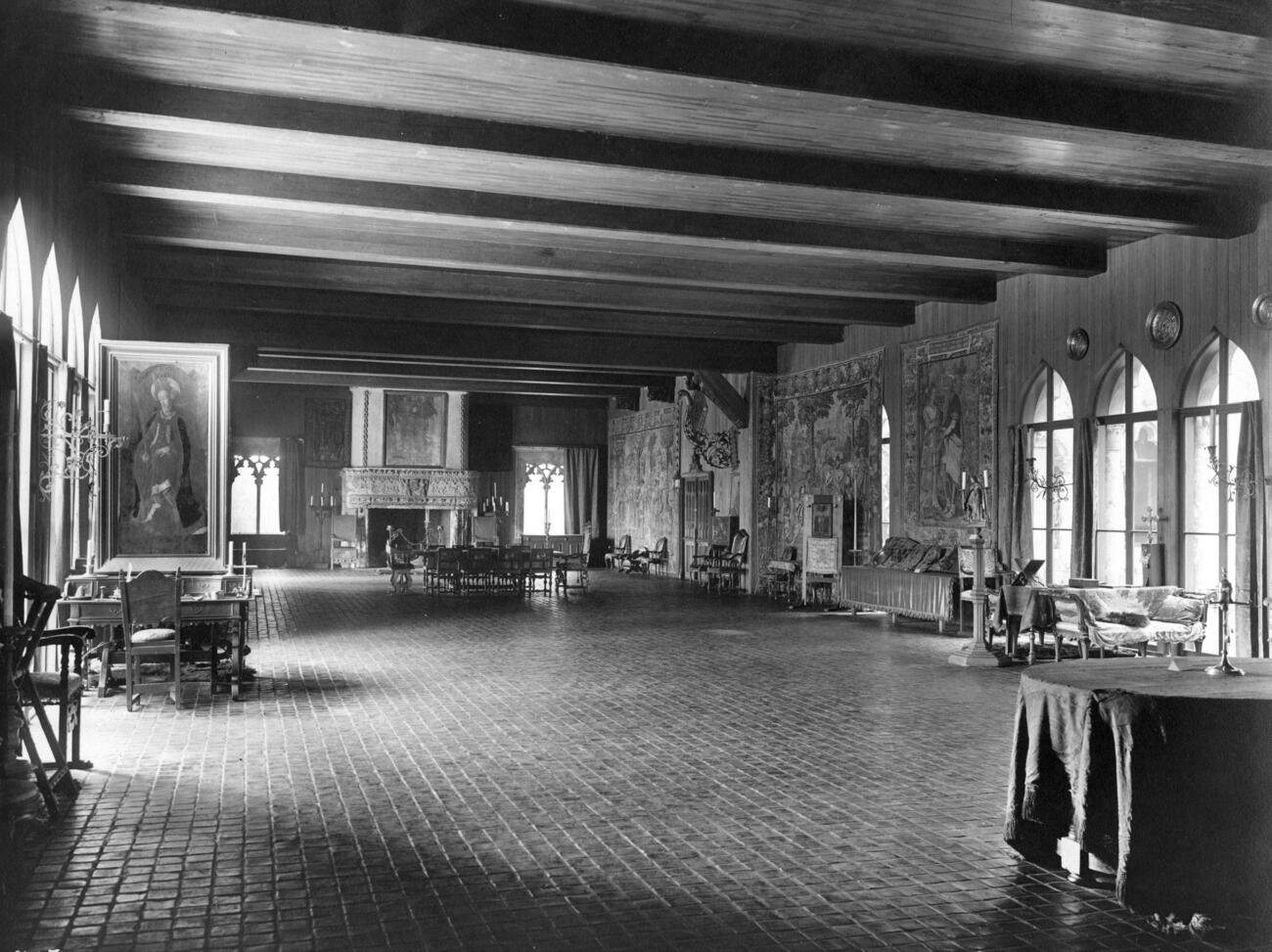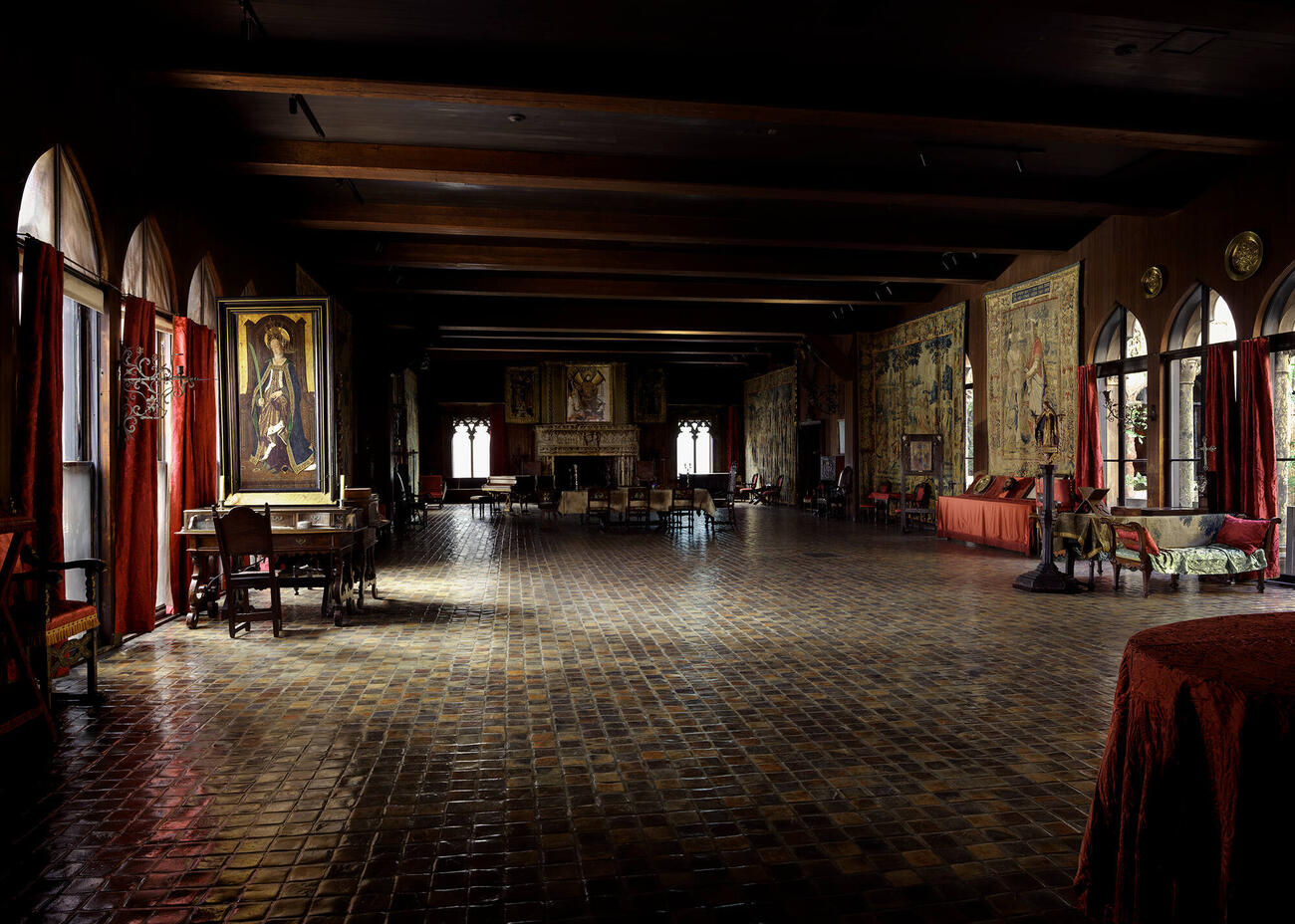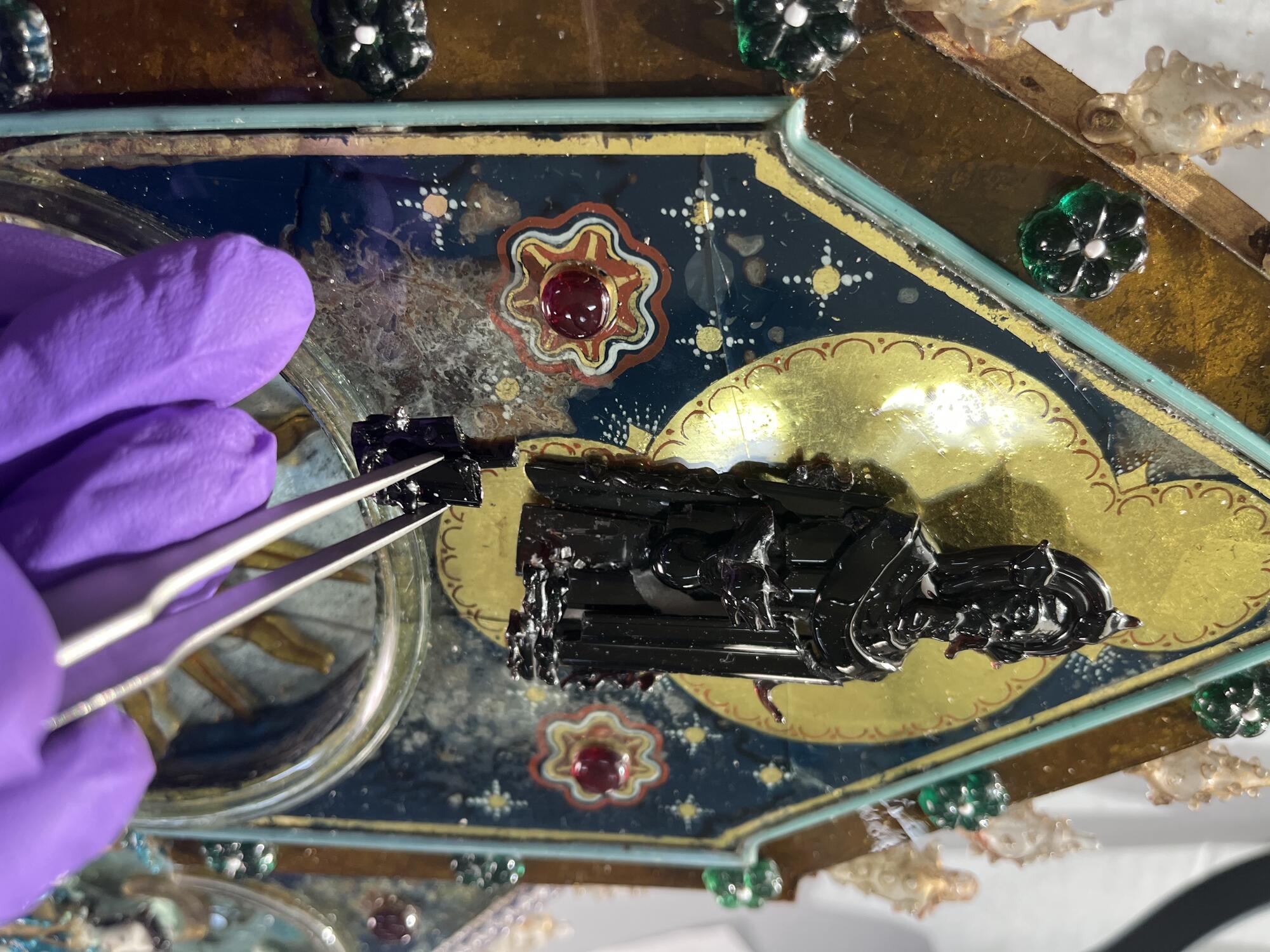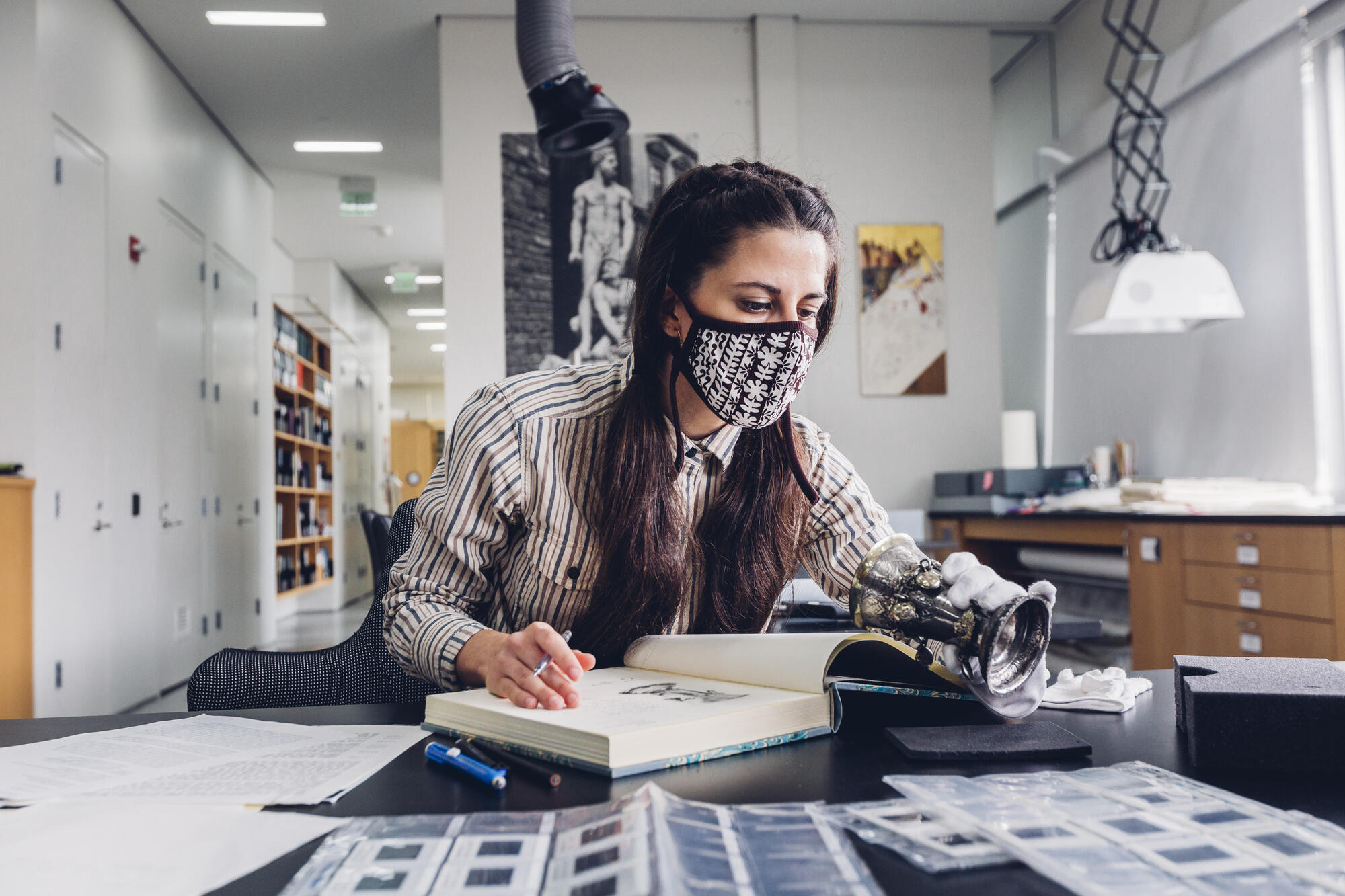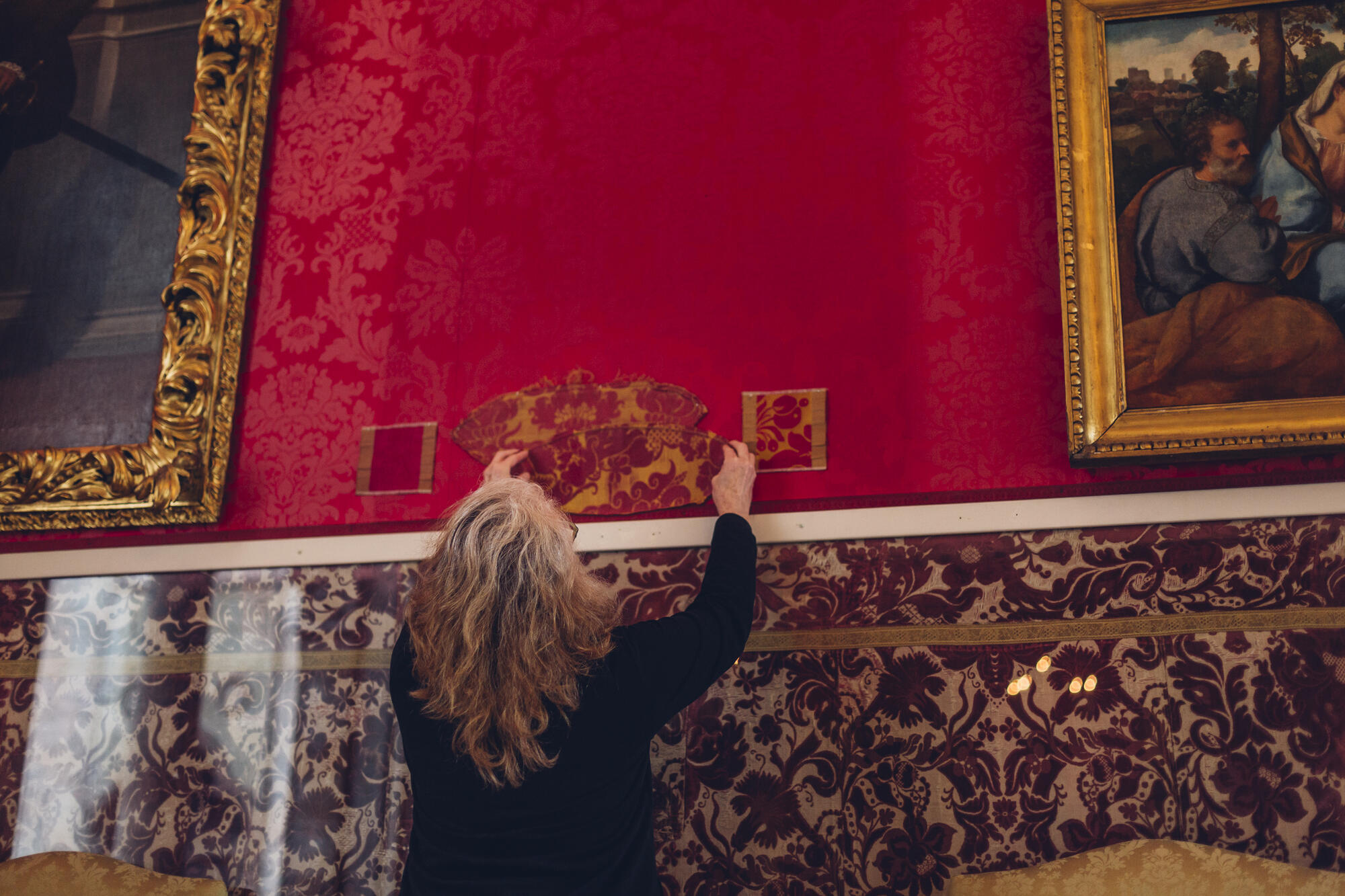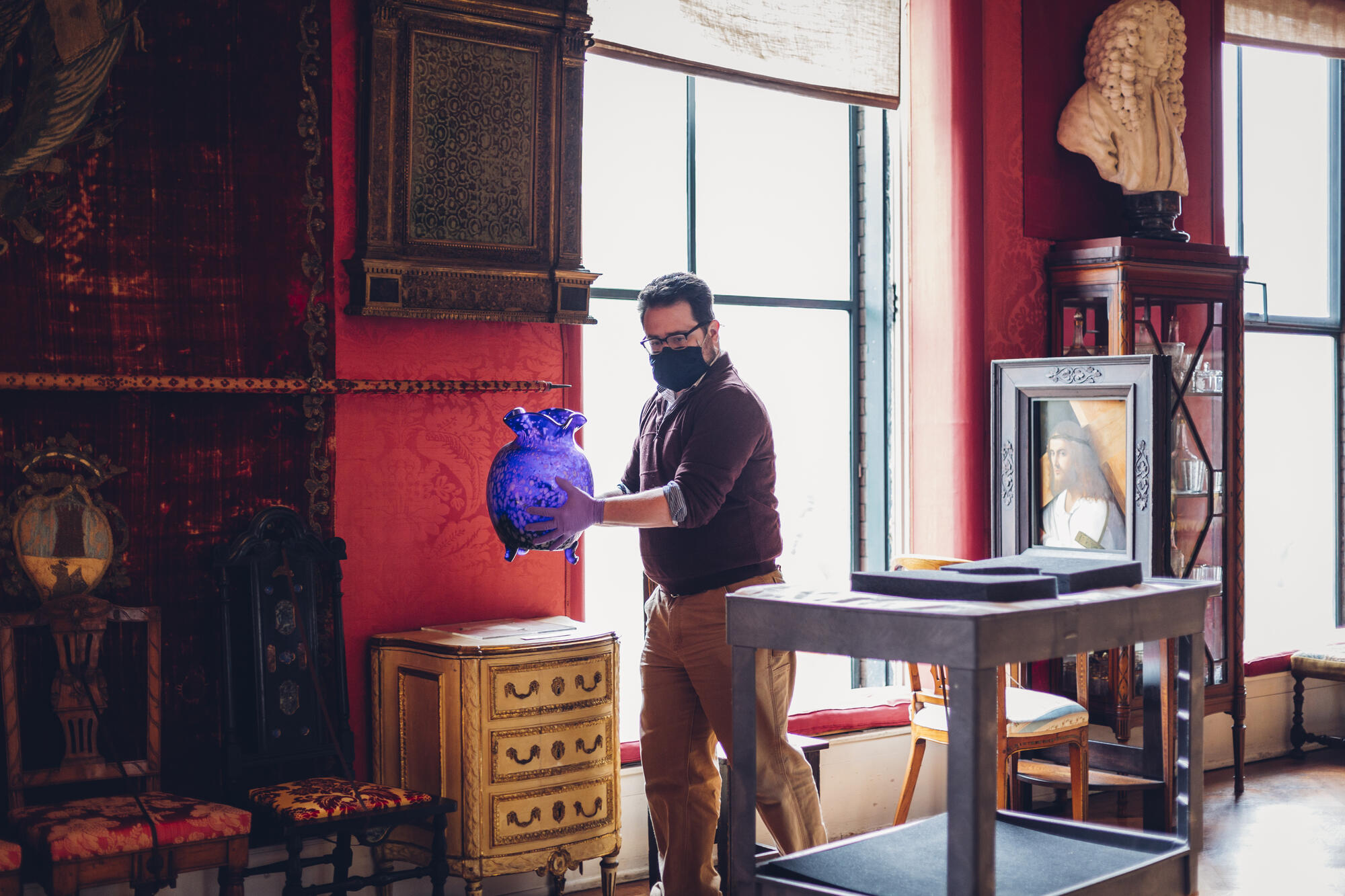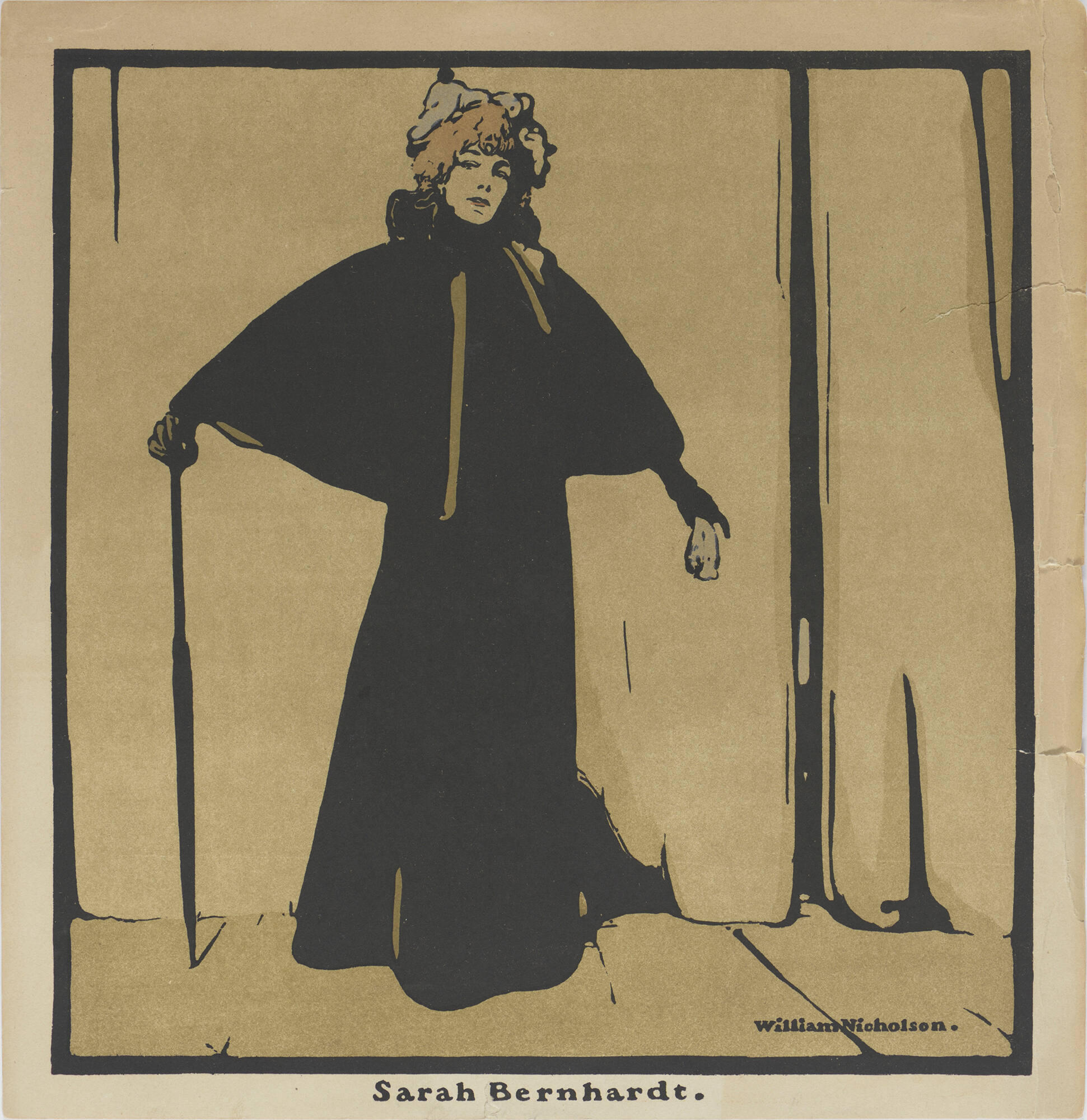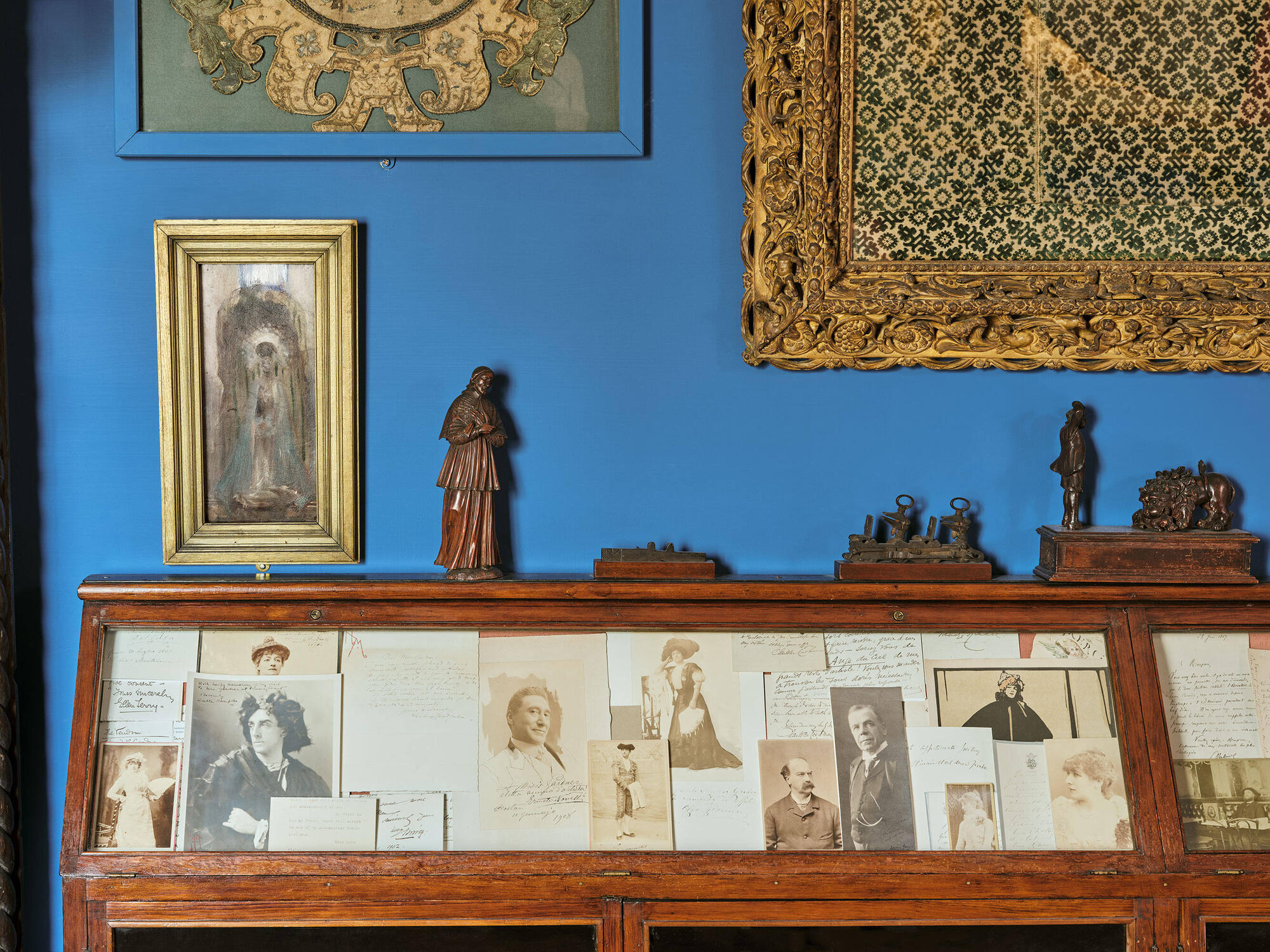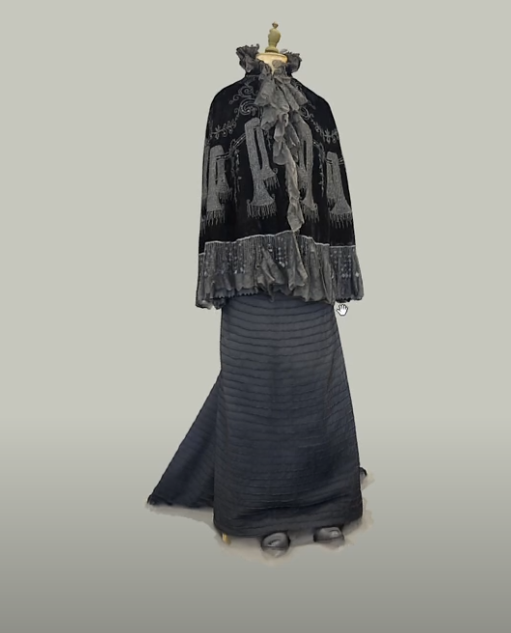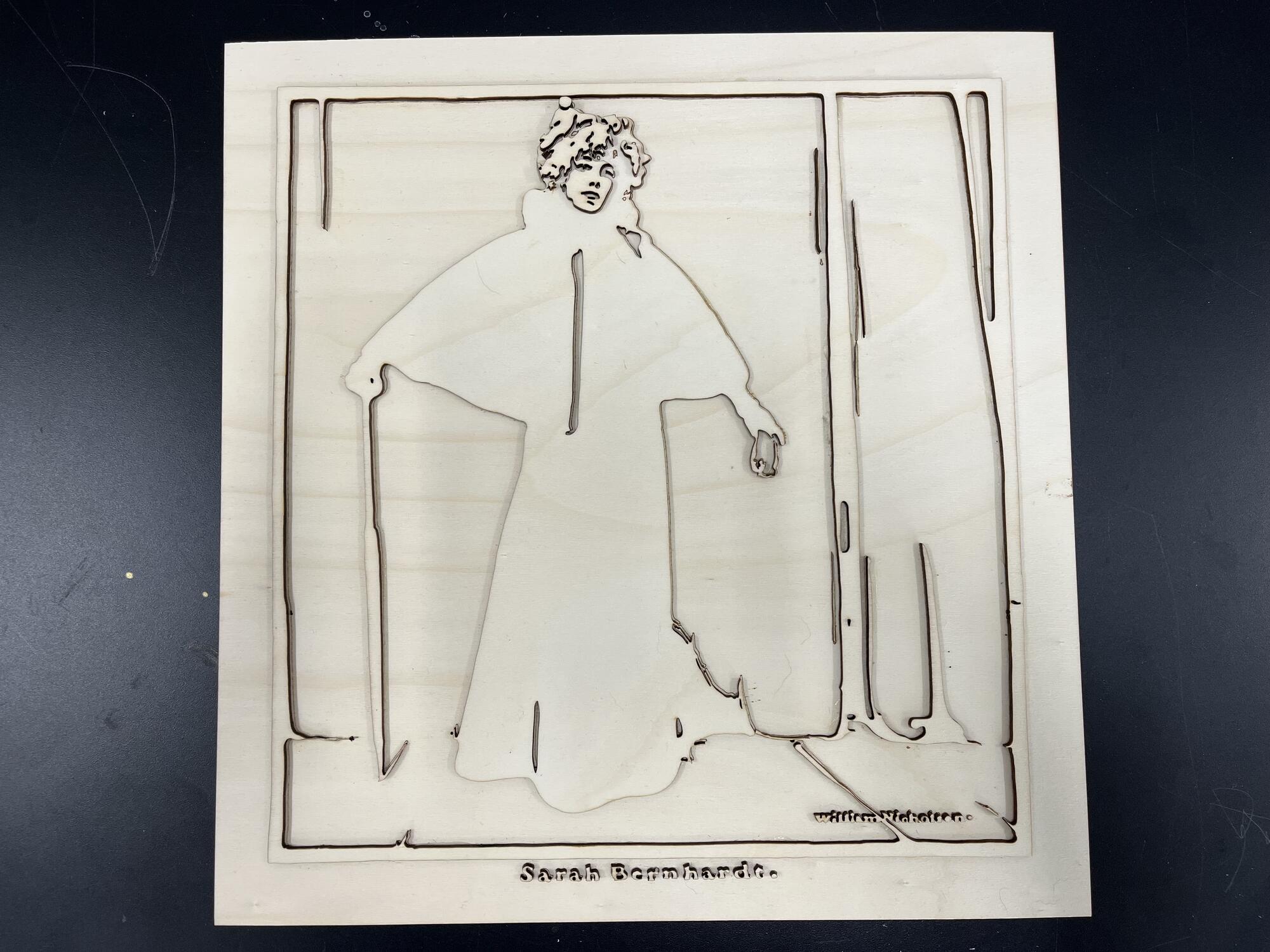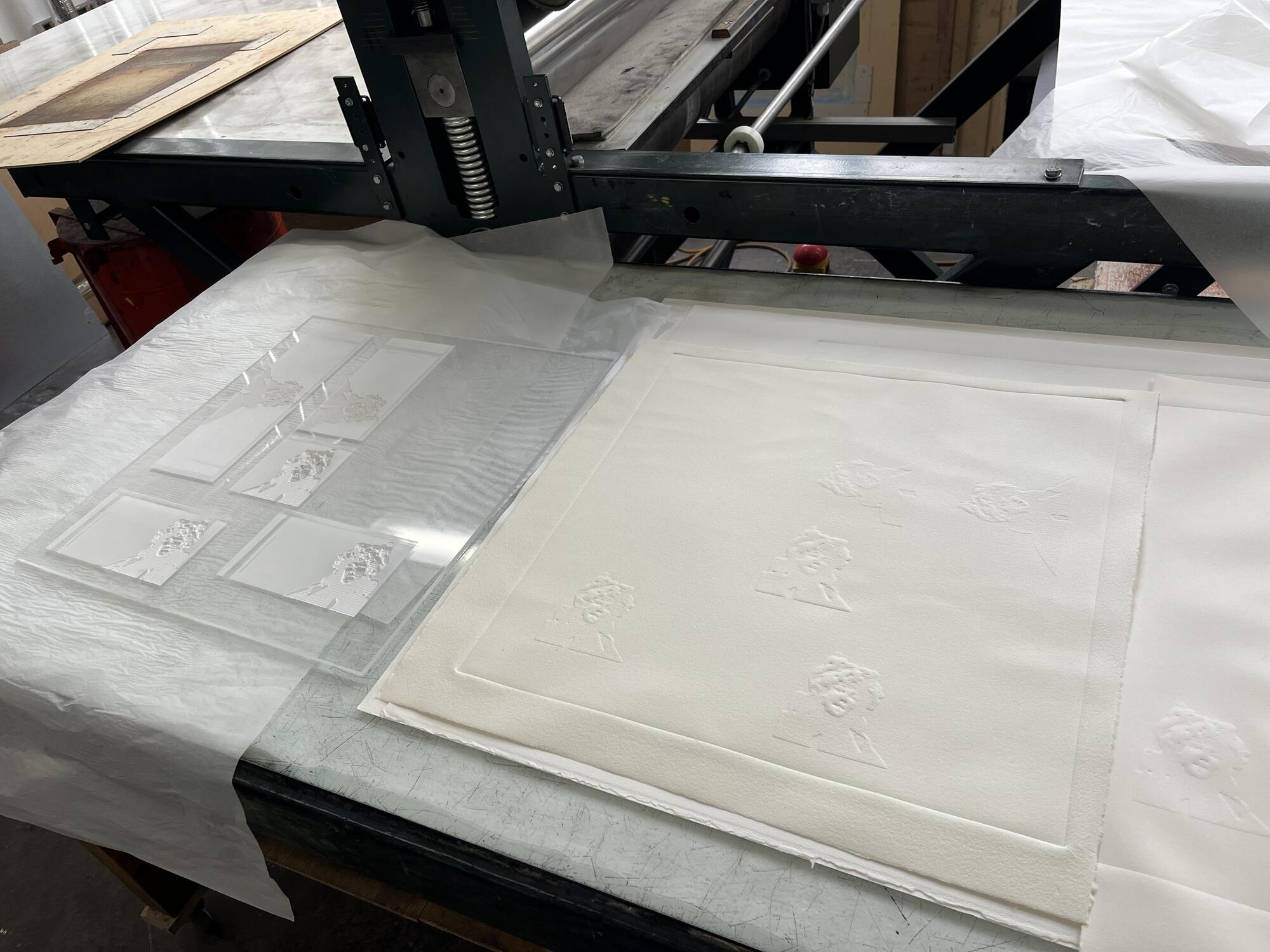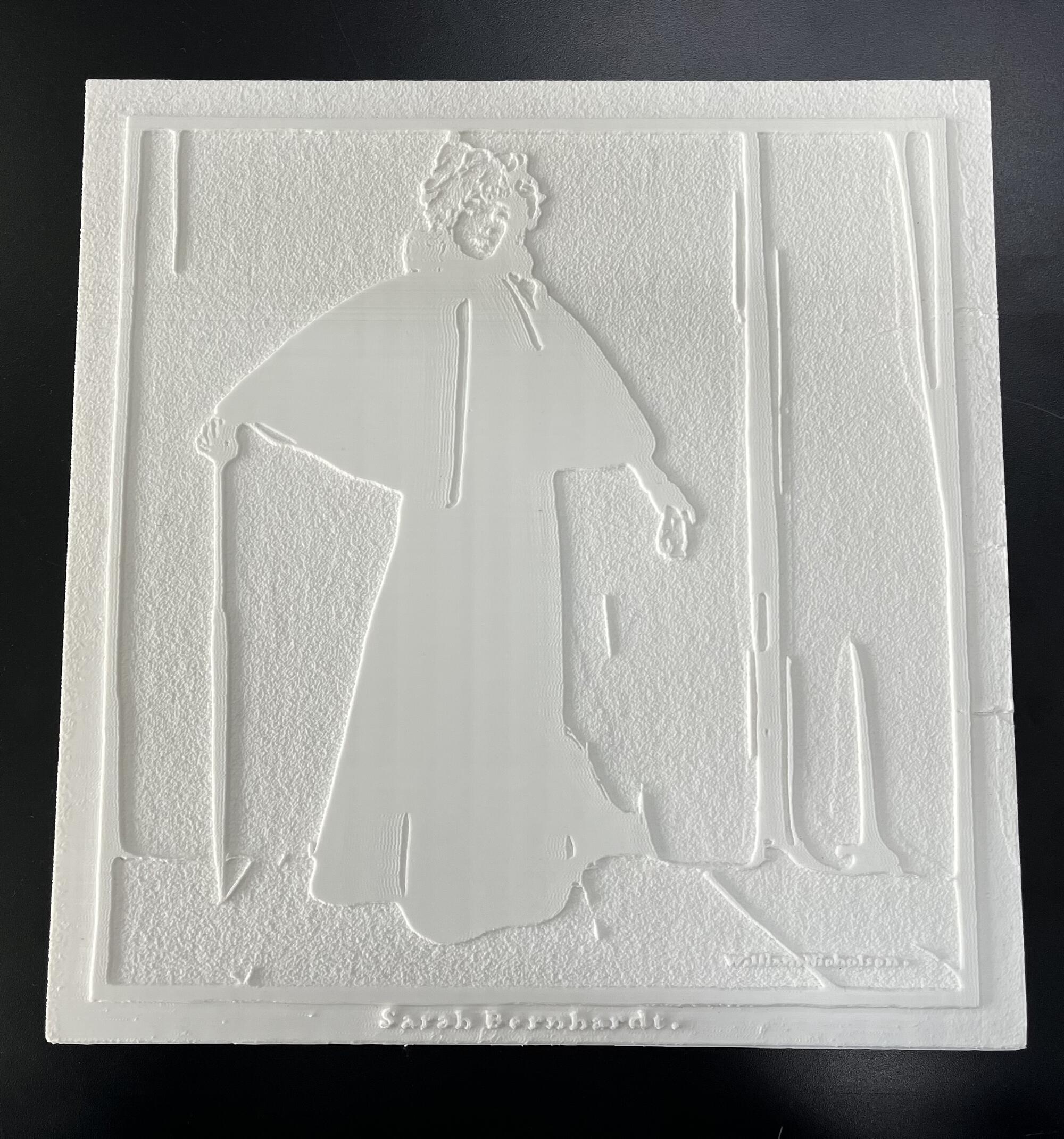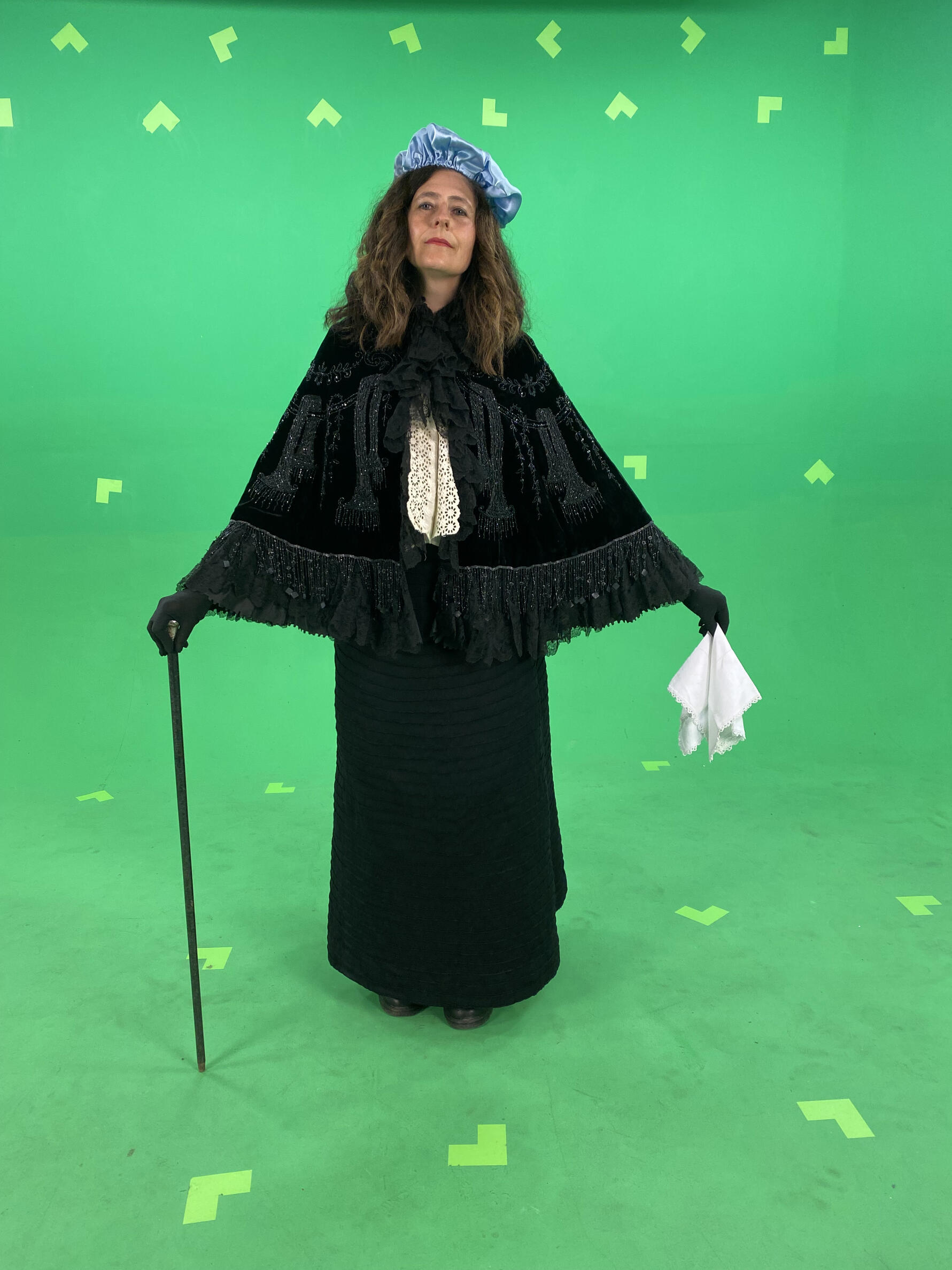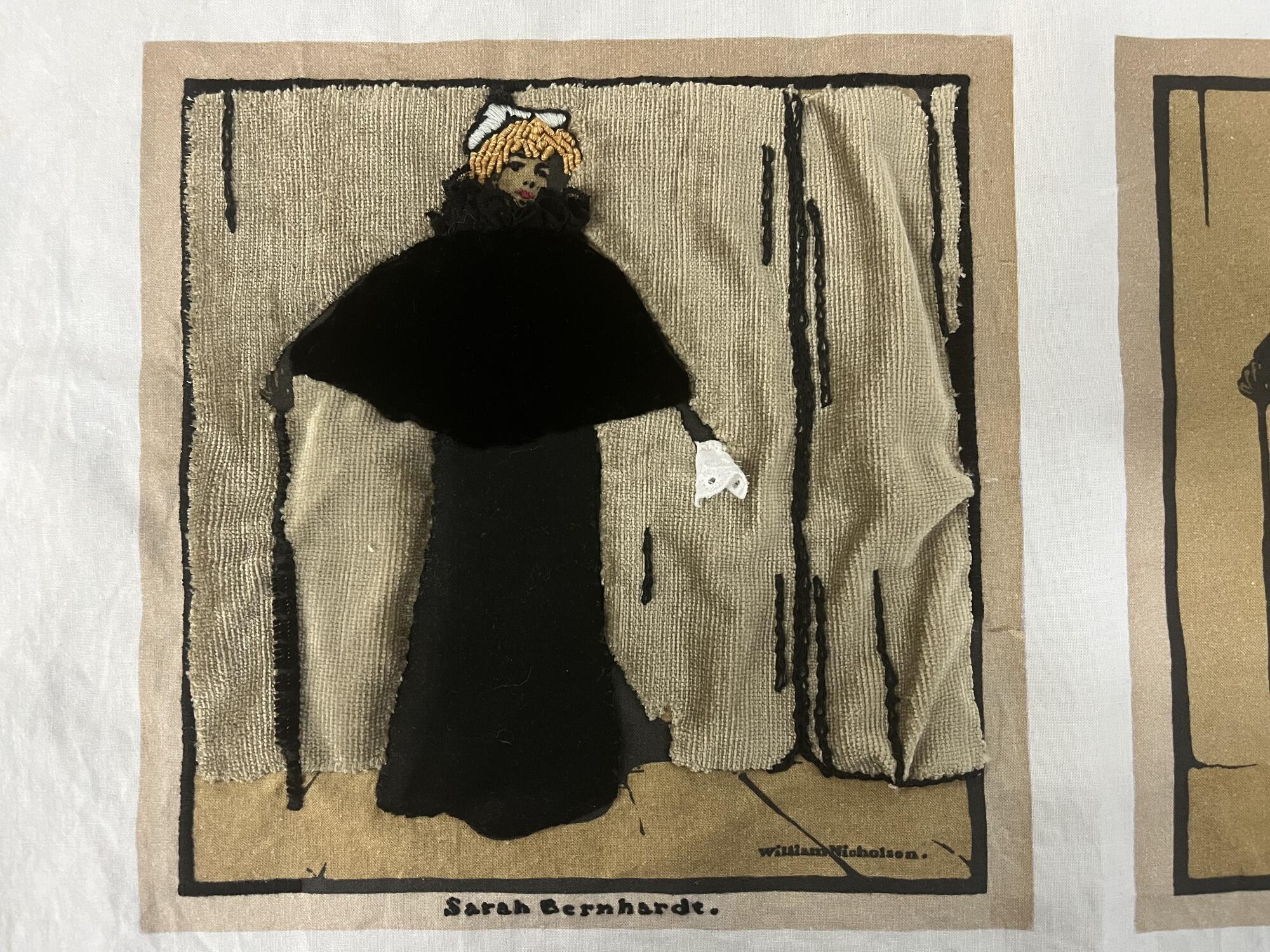Isabella Stewart Gardner’s will states that nothing in the galleries should be permanently changed and that no artworks can be acquired or deaccessioned from the collection. As a result, the galleries today look very much as they did at the time of Mrs. Gardner’s death in 1924. She was determined to ensure that her particular vision would be available for “the education and enjoyment of the public forever.”
Left Photo: Arthur Marr (Marr24254); Right photo: Sean Dungan
Tapestry Room, Isabella Stewart Gardner Museum, 1926 and 2011.
The museum-going public is more diverse than ever. People with disabilities make up one of the largest minority groups in the world. Their “education and enjoyment” hasn’t always been prioritized, but that has been changing and it’s good news for everyone.
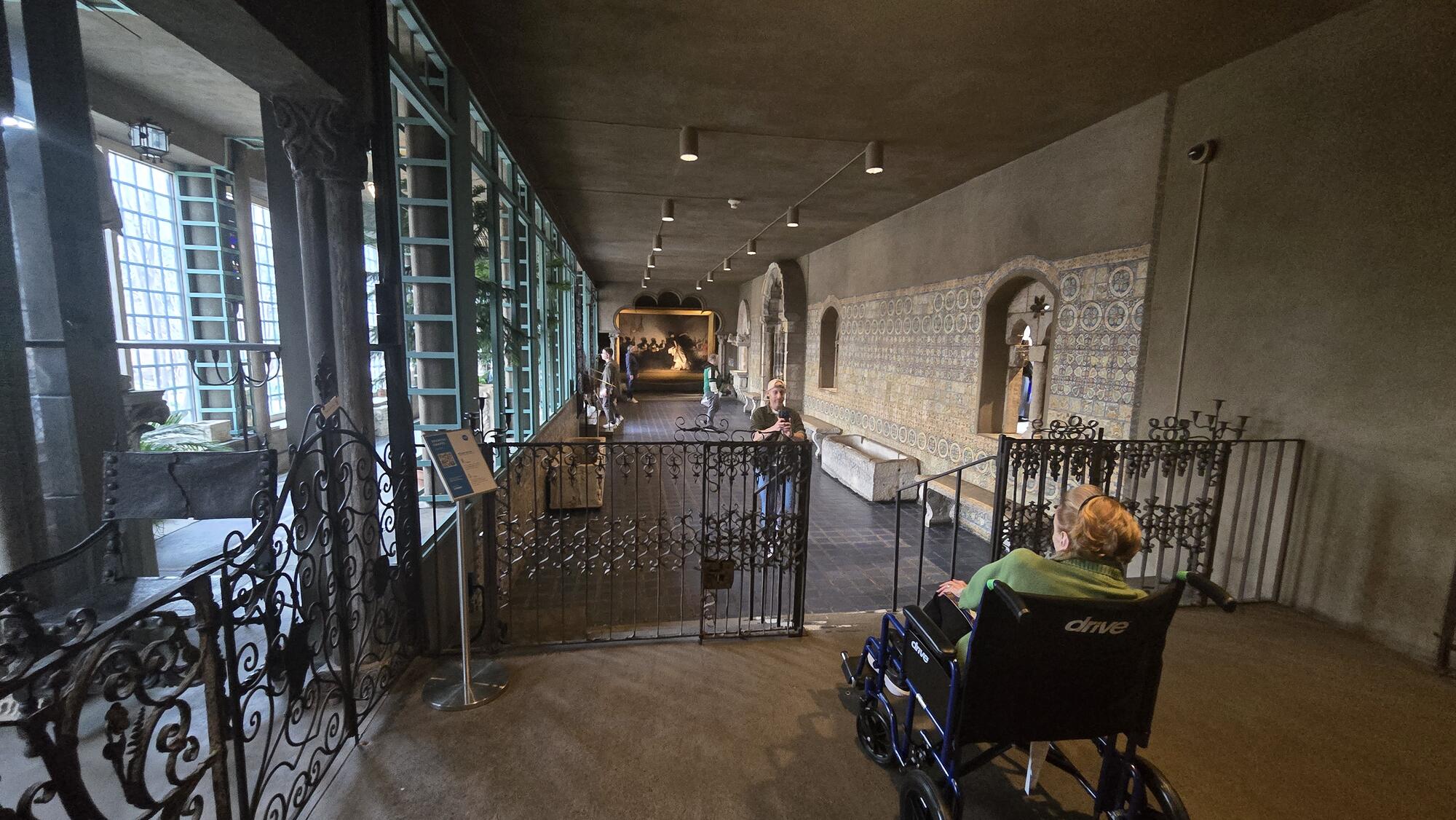
Photo: Maya Alho
A visitor who uses a wheelchair poses at the top of the stairs in the Spanish Cloister
Touch Tours
Visitors with blindness and low vision can request a touch tour at the Gardner Museum (request in advance by emailing tours@isgm.org). During a touch tour, a museum teacher guides the visitor through touch experiences with designated collection objects. Visitors on touch tours can touch some objects without gloves, but others, particularly metal objects, require wearing gloves because the oils and salts from our hands can easily corrode metal surfaces. If the visitor would like, museum teachers can also give visual descriptions while they are guiding touch tours.
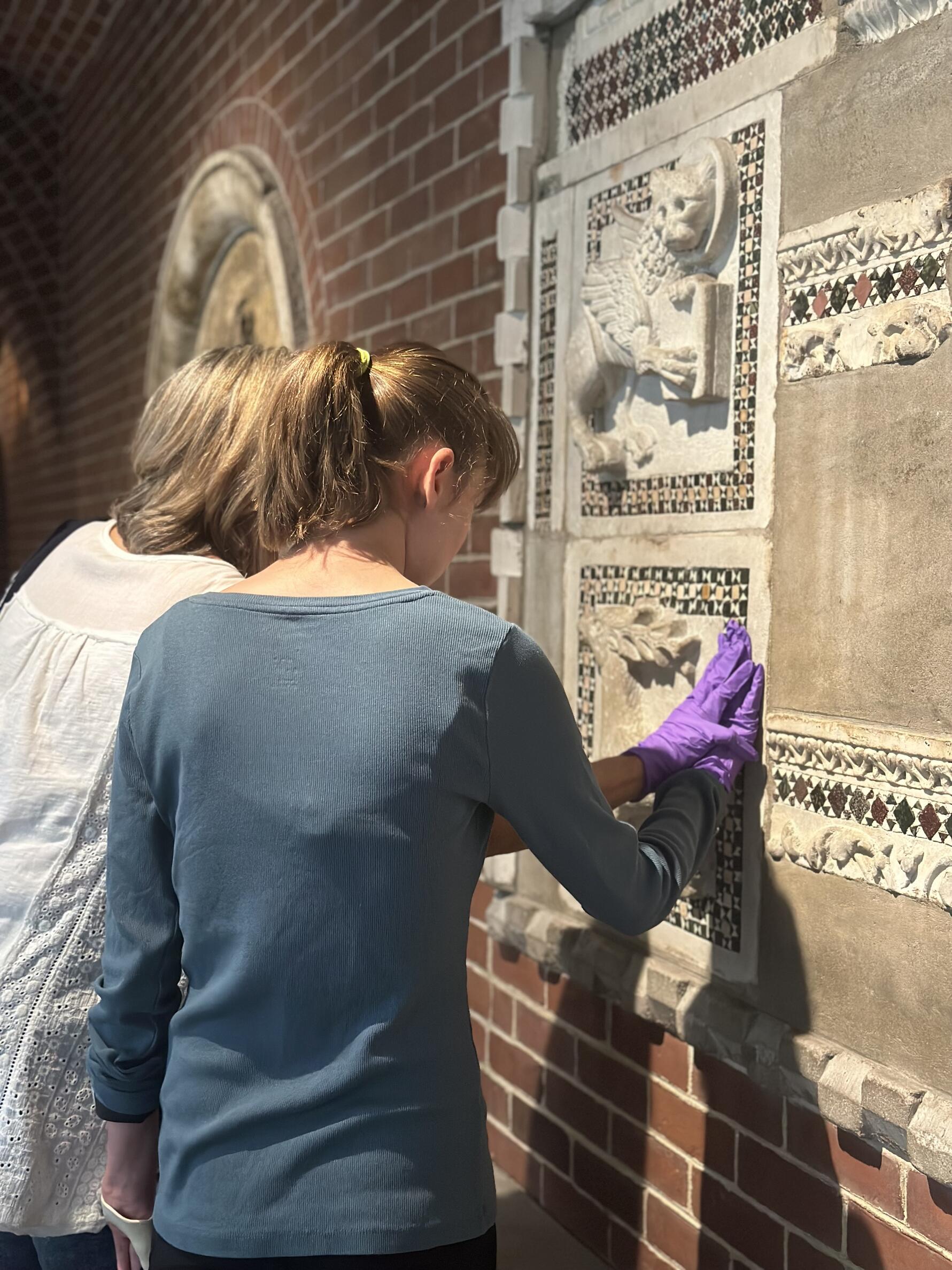
Isabella Stewart Gardner Museum, Boston
A museum teacher guides a visitor with blindness on a touch tour in the East Cloister
Accessibility Collaborators
Conservators are trained to touch art, which means we have a lot of touch experience. That positions us to be collaborators and resources for access to the collections in our care. Our job is a balancing act: prevent damage to the collection (think environment, light, and display) and meet access needs (think visitors, scholars, and exhibitions) so we’re closely involved in determining which objects can be included on a touch tour. But it’s always 3-dimensional objects.
Experiments with 2D Accessibility
Thinking about how conservators use touch got me thinking about how much more inclusive touch tours could be if we could include 2-dimensional works of art. To my great good fortune, the US-UK Fulbright Commission agreed that it was an idea worth pursuing and awarded me a Fulbright U.S. Scholar award to research how to increase the accessibility of 2-dimensional works of art for blind and partially blind museum visitors. Last year I spent four months in Dundee, Scotland at the University of Dundee where I was welcomed into the Studio Ordinary, an interdisciplinary research center combining design and disability studies.
I selected one object from the Gardner’s collection to work with—a colored woodcut print of the French actress Sarah Bernhardt from the 1800s. You can access the full visual description for this object on its online collection page. I chose this artwork because it's partially obscured by other material in the display case, making it hard for anyone to view and because Sarah Bernhardt led a fascinating life. My goal was to explore how many different types of tactile models I could make of the print, keeping in mind the materials and how they feel based on my years of touching art as a conservator. Creating tactile choices was important to me because what feels nice to touch for one person may not feel good to another.
My experiments spanned many different materials including laser cut paper and wood to make layered and stacked tactile prototypes, paper embossments created from pressing dampened paper onto engraved wood and Plexiglas molds, and tactile prototypes printed with 3D printers and carved with CNC routers. Inspired by Bernhart’s dramatic black dress, I also used embroidery stitches and fabric appliques to make a textile tactile prototype. Lastly, I connected with a costume designer who lent me authentic pieces of clothing from the 1890s that are very similar to what Bernhardt wears in the print. Using photogrammetry, I made a digital 3D model of the outfit, allowing a visitor to zoom in on the details on a screen. And I even shot a video of me wearing the outfit and moving across a stage of a virtually modeled theater to show how the fabric moves and the beading shimmers in the light. Pairing the video with audio description would allow all visitors to appreciate the dynamic costume.
A Multisensory Approach
I also explored a multisensory approach, both for understanding Bernhardt and understanding the print-making process. Could a recording of Sarah Bernhardt work? The scent of a 19th century theatre would be unpleasant but evocative. How about incorporating the sound of inking up a printing roller or the crank of a printing press? How about being able to hold or touch the tools and materials that were used to create the woodcut print?
During feedback sessions with user experts who have a range of blindness and experience interacting with art, it became clear that multisensory engagement enhances a person’s experience of art and their memory and connection to their experience of interacting with it, regardless of ability. Just as people have different learning styles, people also have different ways of experiencing art. Providing all visitors multisensory options, regardless of their sensory abilities, helps everyone better access art. Bonus feature: it also destigmatizes accessibility accommodations for visitors with disabilities.
At the Gardner, we’re doing just that! The October 2025 exhibition, Visions of Black Madonnas, incorporates touchable flameworked glass components made by artist, Trina Urrata Weintraub, that replicate flameworked glass elements found in the Gardner’s Black Glass Madonna sculpture.
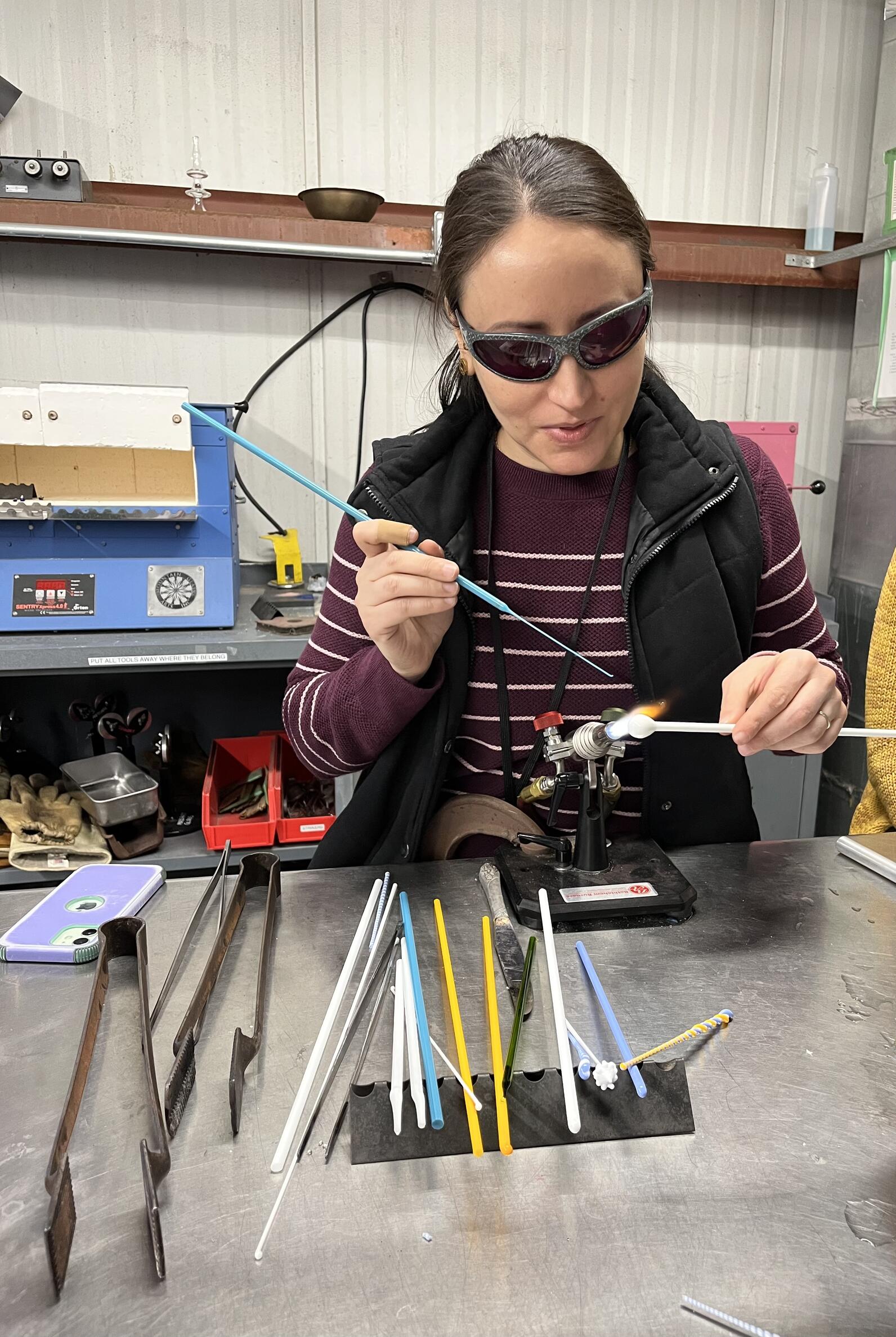
Trina Urrata Weintraub flameworking with glass rods
In the spring of 2025, the exhibition, Waters of the Abyss: An Intersection of Spirit and Freedom, by contemporary artist Fabiola Jean-Louis, included a sound concept by Carl Damas and Fabiola Jean-Louis that combined the sounds of ocean waves, windchimes, bells, and a conch shell horn. The sound piece, which you can listen to on the Gardner’s Libsyn channel, gently played throughout the gallery and infused the space with spiritual and emotional echoes.
And the exhibition in the summer of 2025, Ming Fay: Edge of the Garden, incorporated scent stations featuring ginseng and star anise that visitors had the option of opening and smelling. Ginseng and star anise are just a couple of examples of inspiration from nature that appear in Fay’s work.
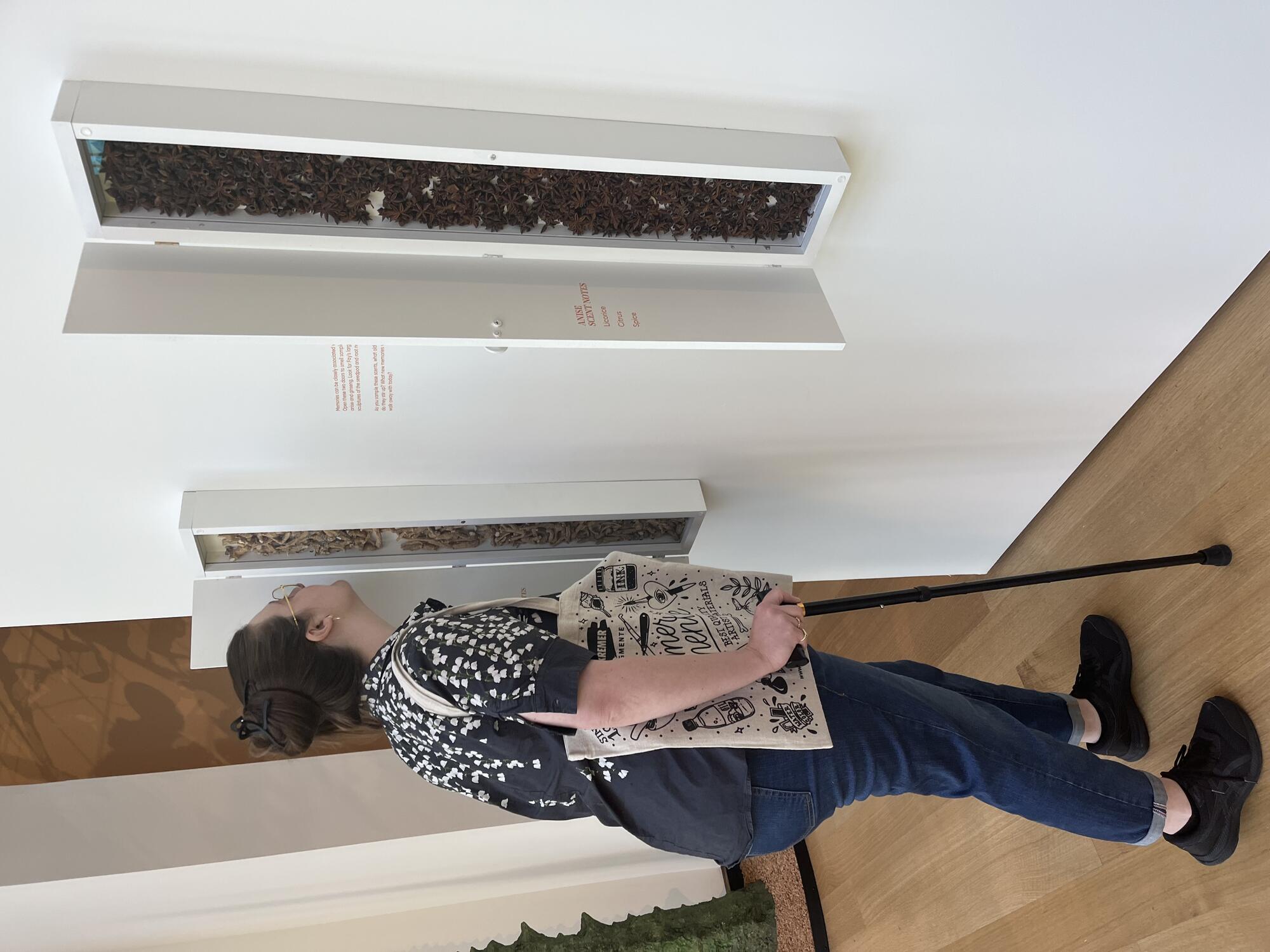
A visitor using the scent boxes to smell ginseng in the Ming Fay: Edge of the Garden exhibition.
Visit us soon to see what will happen next!
You May Also Like

Read More on the Blog
From Paris to the Perkins School for the Blind: Isabella’s Slippers

Read More on the Blog
Sound Check: First Concert Hall Audience

Find Out More
Accessibility at the Gardner
